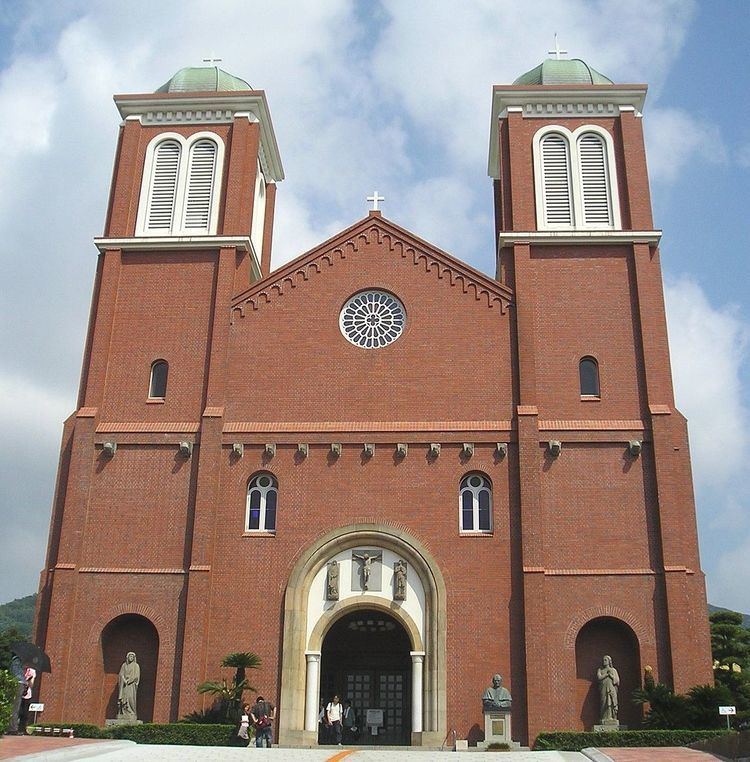Opened 1959 Status Cathedral | Founded 1877 (1877) Phone +81 95-844-1777 Demolished 1945 | |
 | ||
Weekly attendance Sat:7:00pmSun:6:00am,7:30am,9:30am Address 1-79 Motoomachi, Nagasaki, Nagasaki Prefecture 852-8112, Japan Similar Ōura Church, Nagasaki Peace Park, Nagasaki Atomic Bomb Mu, Glover Garden, Megane Bridge | ||
Urakami and its church
The Immaculate Conception Cathedral (無原罪の聖母司教座聖堂) also St. Mary's Cathedral, often known as Urakami Cathedral (Japanese: 浦上天主堂 Urakami Tenshudō) after its location Urakami, is a Roman Catholic church located in Motoomachi, Nagasaki, Japan.
Contents
History
In 1865, the French priest Bernard Petitjean discovered that almost all the Urakami villagers were Christian. Between 1869 and 1873, over 3600 villagers were banished. During their exile, 650 died. The persecuted Kakure Kirishitan (Hidden Christians) came back to their home village after 7 years exile in 1873, and decided to construct their own church.
Construction of the original Urakami Cathedral, a brick Neo-Romanesque building, began in 1895, after a long-standing ban on Christianity was lifted. They purchased the land of the village chief where the humiliating interrogations had taken place for two centuries. The annual "fumi-e" interrogations required those present to tread upon an icon of the Virgin Mary or Jesus. They thought the place was appropriate considering their memory of the long persecution. Construction of the building was started by Father Francine and was completed under the direction of Father Regani. The frontal twin spires stood 64 meters high were constructed in 1875. When completed in 1925 (Taishō 14), until its destruction in 1945, it was the largest Christian structure in the Asia-Pacific region.
The atomic bomb that fell on Nagasaki on August 9, 1945 detonated in Urakami only 500 m (1640 ft) from the cathedral, completely destroying it. As the Feast of the Assumption of Mary (August 15) was near, Mass was held on the day and was well attended. The resultant collapse and heat-wave cindered and buried all those present in the Cathedral. The destruction of the cathedral hit the religious community of Nagasaki the hardest, as they viewed it as a loss of spirituality. It had such an impact, that noted playwright Tanaka Chikao wrote his most successful play, Head of Mary, about the efforts of Christians in Nagasaki to reconstitute their faith by rebuilding the Virgin Mary.
A replacement was built in 1959, after a serious debate between the city government and the congregation. The city government suggested preserving the destroyed cathedral as a heritage site, and offered an alternate site for a new church. However, Christians in Nagasaki strongly wanted to rebuild their cathedral on the original site, as a symbol of their persecution and suffering. In 1980 it was remodeled to more closely resemble the original French style.
Statues and artifacts damaged in the bombing, including a French Angelus bell, are now displayed on the grounds. The nearby Peace Park contains remnants of the original cathedral's walls. What remained of the cathedral is now on display in the Nagasaki Atomic Bomb Museum.
